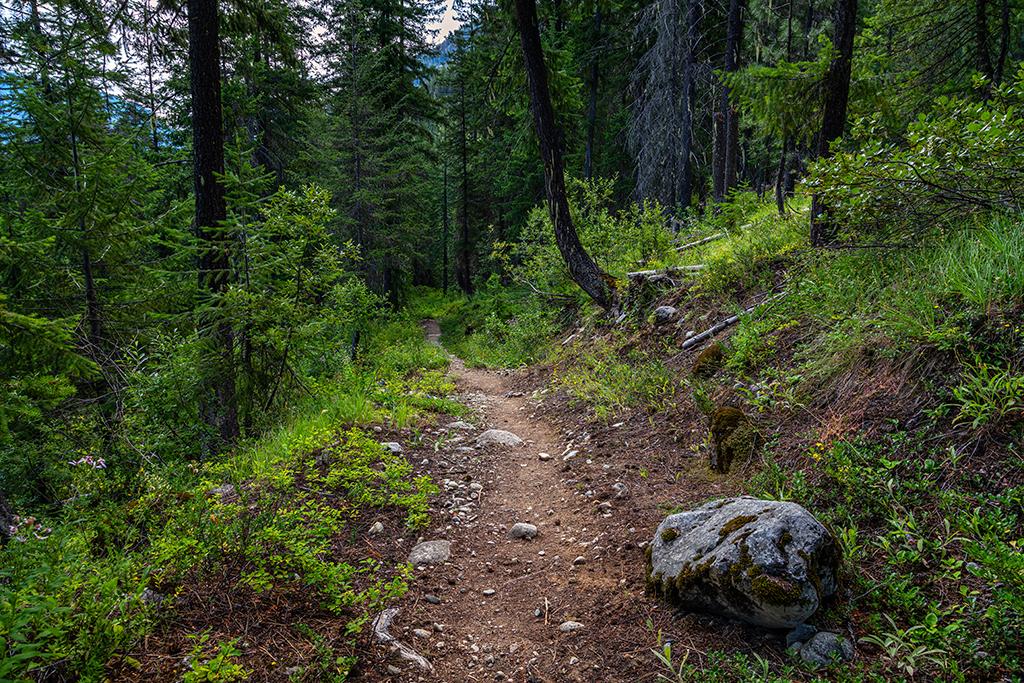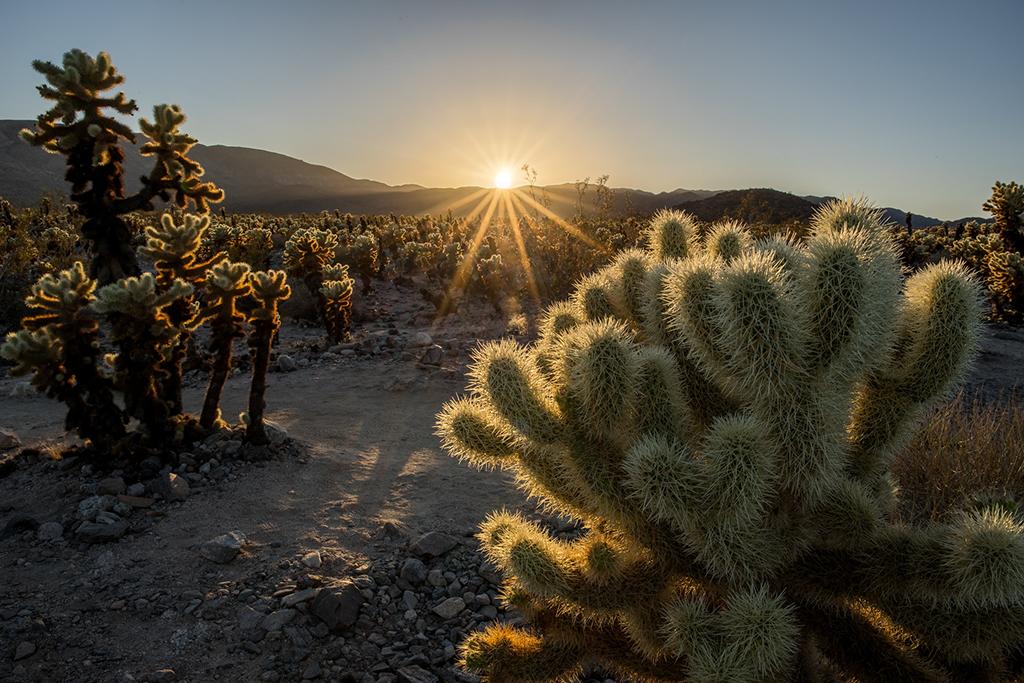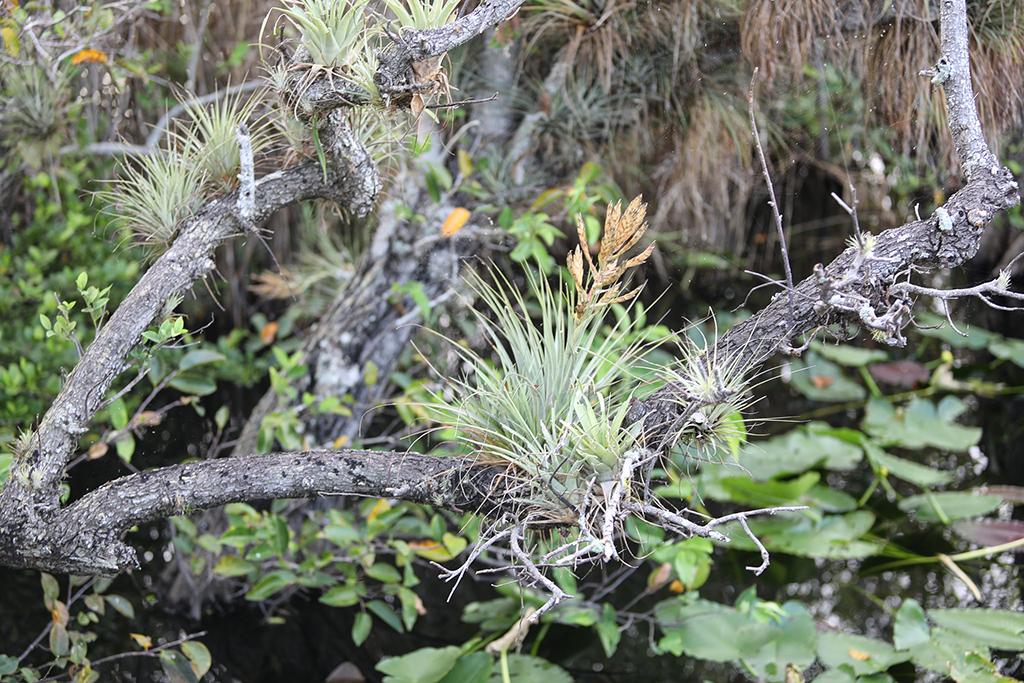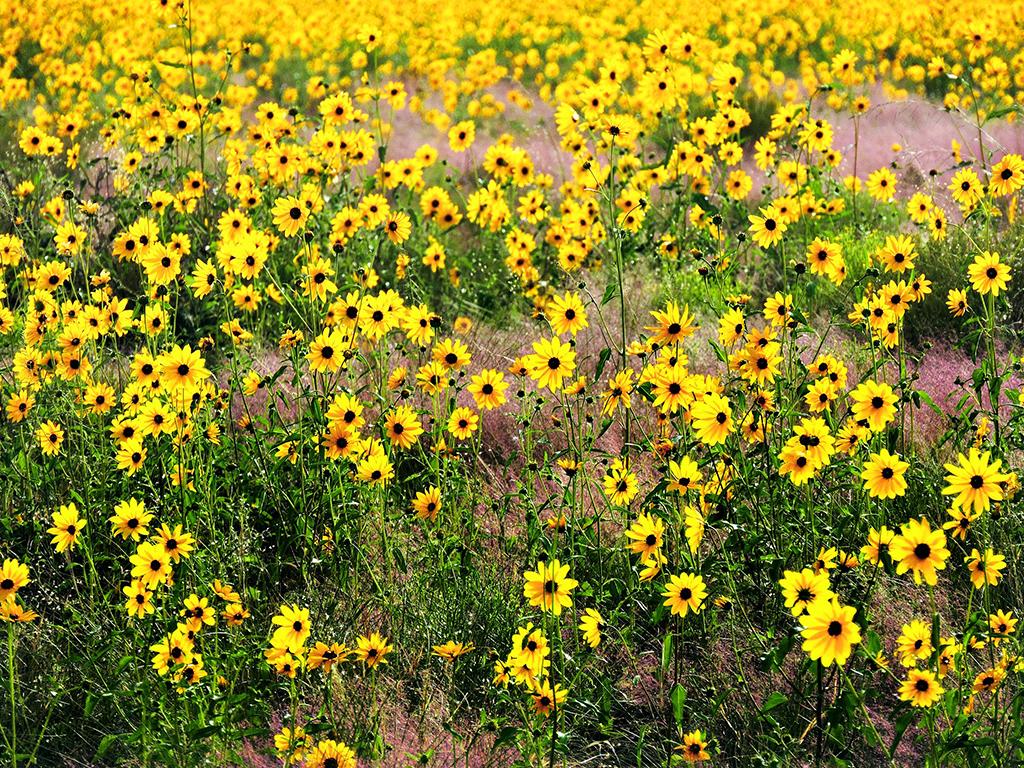
A part of the Pacific Crest Trail, North Cascades National Park / Rebecca Latson
While there actually is a flower quiz that was penned for the Traveler back in 2011, I thought I’d still create another botany-centric quiz and trivia piece for you. See how much you know about national park plant / flower / tree life before looking at the answers at the bottom of this piece.
1. North Cascades National Park is one place where you can still find stands of old-growth forests. There are three species that “reliably” make up these old-growth groves in this national park: Douglas fir, western hemlock, and ___
a) western red cedar
b) coastal redwood
c) sugar pine
d) live oak

Agave, Big Bend National Park / Rebecca Latson
2. Big Bend National Park is one of those national parks in which you will see cacti and succulents (agave, ocotillo, yuccas). Cacti and succulents are known as ___
a) epiphytes
b) thallophytes
c) xerophytes
d) bryophytes

Setting sun at the Cholla Garden, Joshua Tree National Park / NPS-Glauco Puig-Santana
3. Teddy bear cholla cactus (aka jumping cholla) look fuzzy and soft from a distance, but are far from that when you get closer. Joshua Tree National Park even has a Cholla Cactus Garden filled with these cute, prickly cacti. Teddy bear cactus reproduces by growing a whole new plant from a broken off piece of an older teddy bear. This process is called ____
a) pollination
b) hermaphroditism
c) spore formation
d) cloning

Bromeliads on Anhinga Trail, Everglades National Park / NPS-Daniel Miguel
4. True or False: the bromeliads you see in Everglades National Park are called epiphytes.
a) True
b) False

Prairie sunflowers and ring muhly grass, Great Sand Dunes National Park / NPS-Patrick Myers
5. A visit to Great Sand Dunes National Park in Colorado in the late summer may grant you the opportunity to view bright yellow prairie sunflowers, common in the park’s grasslands, but also growing on the sand dunes. True or False: only immature sunflowers track the sun (heliotropism), turning to face it throughout the day.
a) True
b) False
6. Saguaro National Park is home to a number of agave species, including Palmer’s century plant (Agave palmeri), Schott’s century plant (Agave shottii), and Parry’s century plant (Agave parryi). True or False: agave plants cannot live where temperatures regularly dip below freezing to create what we would call a hard freeze.
a) True
b) False

Dry trail, dry wash, Bryce Canyon National Park / Rebecca Latson
7. Bryce Canyon National Park is home to three types of Juniper: common juniper, Utah juniper, and ___.
a) Alligator juniper
b) California juniper
c) Western juniper
d) Rocky Mountain juniper

Sagebrush and mountains, Grand Teton National Park / Rebecca Latson
8. True or False: the sage leaves you see (and smell) on sagebrush in Grand Teton National Park are related to the sage you use for cooking.
a) True
b) False

The red bark of sequoia trees, Sequoia National Park / Jeff Hollett
9. Giant sequoias in Sequoia National Park are very long-lived, lasting for over 3,000 years. True or False: sequoias can sprout only from seeds.
a) True
b) False

Black Sand Basin landscape, Yellowstone National Park / Rebecca Latson
10. During a visit to the geyser basins of Yellowstone National Park, you’ll see standing dead trees with white rings surrounding the bottom of their trunks. What is the nickname for those white rings?
a) bathtub ring
b) upside down q-tips
c) bobby socks
d) whitewash
Here’s a little trivia

Visiting the shoreline, Isle Royale National Park / NPS-Eva DiDonato
Isle Royale National Park is located a good distance from the Arctic, yet it’s still pretty cold in some areas because of the very chilly water of Lake Superior. The cold water creates what is called a microclimate, which is the perfect home for some plants that love “sweater weather.” These plants are called “arctic disjuncts” and they are usually found much further north. Isle Royale has about 20 species of arctic disjuncts, including prickly saxifrage and alpine bistort.

Hanging garden greenery, Zion National Park / Rebecca Latson
As you hike the trails of Zion National Park, take a look at the sheer canyon walls. You’ll see streaks of green here and there called “hanging gardens.” A hanging garden doesn’t have to be very big – it just needs porous stone (like the Navajo Sandstone of which the cliffs are composed) and rain and snow water percolating through the stone. Weeping Rock is one place to see a hanging garden, but you can see them anywhere there is green growing on / out of the rock walls, such as all along the Riverside Walk Trail.

Avalanche lilies, Mount Rainier National Park / Rebecca Latson
At Mount Rainier National Park, spring in the upper elevations is a little later than the same season closer to sea level. So, around mid-July and August is when you’ll really see gorgeous blooms all over the place. A couple of the first flowers in bloom to catch your eye will be the bright yellow glacier lilies and white avalanche lilies. There’s even a short, paved trail up in the Paradise area of this national park called Avalanche Lily Trail.
Quiz Answers
1a
In North Cascades National Park, the trees you’ll almost always see (the “reliably” part) are the Douglas fir, western hemlock, and western red cedar. You can recognize old-growth areas not only by seeing big trees, but also a mix of trees of different heights, species, and ages. You’ll see seedlings on the forest floor, as well as dead and decomposing logs and standing dead trees (snags).
2c
Xerophytes are plants that need very little water. They use a photosynthesis process in which their pores (stomata) open only at night to absorb carbon dioxide. This nightly process keeps xerophytes from losing stored moisture.
3d
A teddy bear cactus doesn’t have very many seeds, and most of them are sterile. Instead, their numerous sharp barbs attach to animals (or the unlucky human), break or drop off, then begin to grow and create a clone.
4a True
Bromeliads are epiphytes, plants that grow on other plants without harming them, growing on the trunks and branches and trees in this national park. Florida has 18 native species of bromeliads, many of which you will see in the Everglades, such as the cardinal airplant, giant airplant, and powdery strap airplant.
5a True
Mature sunflower blooms do not track the sun but face east all day long. This allows them to warm up quickly in the morning and be more attractive to pollinators.
6a True
Agaves are succulents, which means they have thick, fleshy leaves that hold lots of water. When water freezes, it expands (ever try putting an unopened can of coke in the freezer?) and destroys the cell walls.
7d
“Bryce Canyon National Park is home to three species of junipers. At high to mid elevations you will encounter a spreading shrub called Common Juniper, Juniperus communis. The low elevation forests consist mostly of Utah Juniper, Juniperus osteosperma, and Colorado Pinyon, Pinus edulis. Rocky Mountain Juniper, Juniperus scopulorum, is common in Bryce's middle elevations.”
8b False
The big sagebrush (Artemisia tridentata) you see in Grand Teton National Park is related to wormwood and tarragon, but not to the sage (Salvia officinalis) you use for cooking.
9a True
“The life story of the giant sequoia begins with a plethora of small seeds. 91,000 sequoia seeds weigh just 1 pound. Unlike its cousin the coast redwood, which can sprout from root and stump, the sequoia can sprout only from seed. To germinate and survive, sequoia seeds must fall on bare, mineral soil. All seeds fall out of cones eventually, but they accomplish nothing unless soil conditions are right. Fires bring down large numbers of seeds on top of soil burned clear of duff. Douglas squirrels, also known as chickarees, harvest cones and release thousands of seeds.”
10c
The thermal waters in which the trees stand or are near contain silica (natural glass). “Bobby socks” occur when the trees absorb those mineralized thermal waters and the silica soaks upward and “freezes” the trees in place, killing them in the process.
References
In addition to the information I found within the nps.gov site pages for each national park, I used the following references:
Emily Hoff & Maygen Keller, Scenic Science of The National Parks, Ten Speed Press, 2020
https://www.nps.gov/bibe/learn/nature/cacti.htm
https://sites.google.com/a/asu.edu/sonora-desert-detectives/v---teddybear-or-jumping-cholla-cactus
https://www.nps.gov/brca/learn/nature/rmjuniper.htm
https://www.nps.gov/isro/learn/nature/flowering-plants.htm
https://queticosuperior.org/blog/living-relicts-the-north-shores-intriguing-disjunct-flora/




 Support Essential Coverage of Essential Places
Support Essential Coverage of Essential Places






